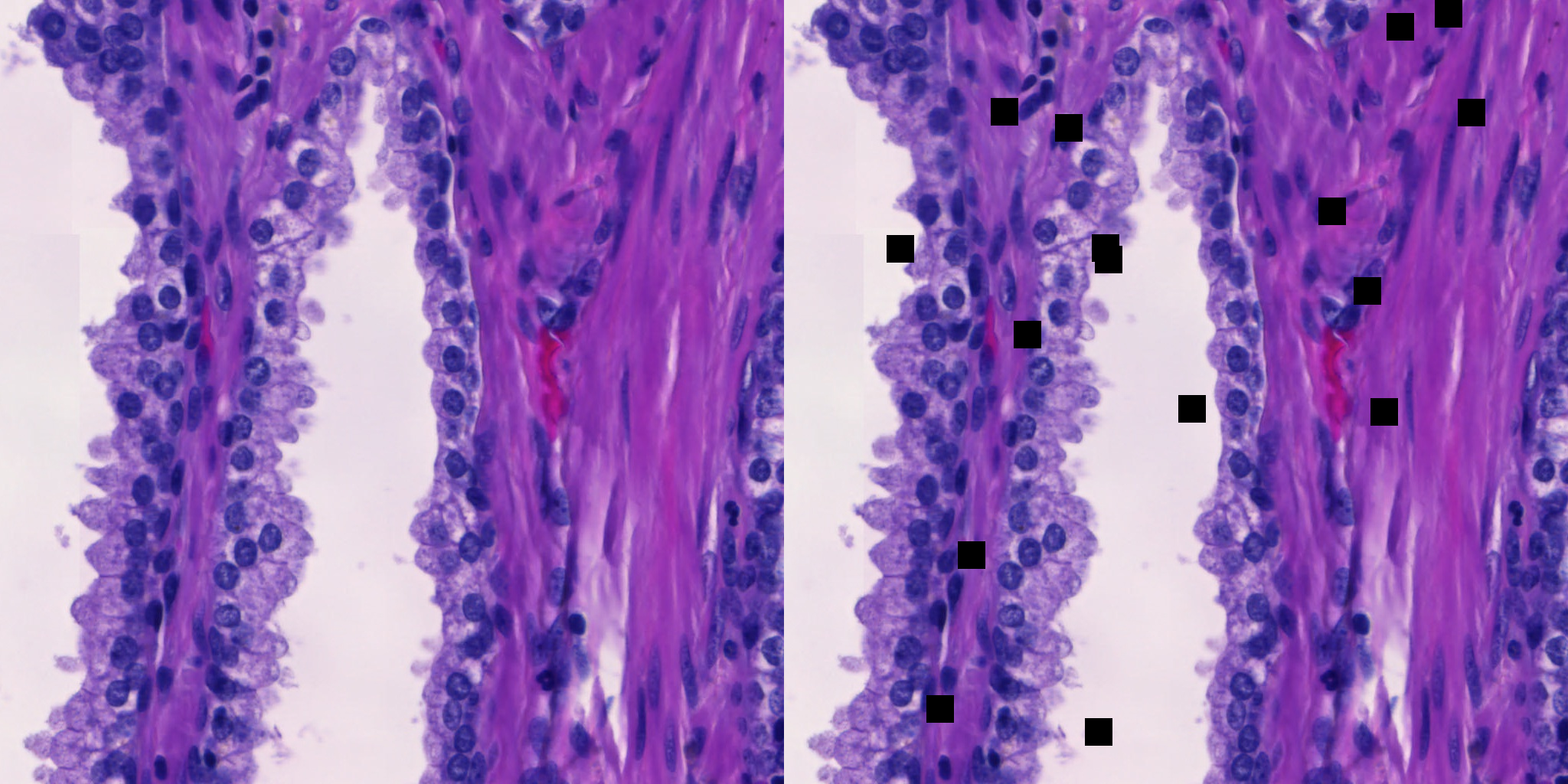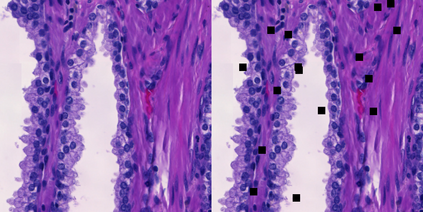Many current neural networks for medical imaging generalise poorly to data unseen during training. Such behaviour can be caused by networks overfitting easy-to-learn, or statistically dominant, features while disregarding other potentially informative features. For example, indistinguishable differences in the sharpness of the images from two different scanners can degrade the performance of the network significantly. All neural networks intended for clinical practice need to be robust to variation in data caused by differences in imaging equipment, sample preparation and patient populations. To address these challenges, we evaluate the utility of spectral decoupling as an implicit bias mitigation method. Spectral decoupling encourages the neural network to learn more features by simply regularising the networks' unnormalised prediction scores with an L2 penalty, thus having no added computational costs. We show that spectral decoupling allows training neural networks on datasets with strong spurious correlations. Networks trained without spectral decoupling do not learn the original task and appear to make false predictions based on the spurious correlations. Spectral decoupling also increases networks' robustness for data distribution shifts. To validate our findings, we train networks with and without spectral decoupling to detect prostate cancer tissue slides and COVID-19 in chest radiographs. Networks trained with spectral decoupling achieve substantially higher performance on all evaluation datasets. Our results show that spectral decoupling helps with generalisation issues associated with neural networks. We recommend using spectral decoupling as an implicit bias mitigation method in any neural network intended for clinical use.
翻译:医学成像的许多当前神经网络在医学成像上一般化,与培训期间所见数据不相符。 这种行为可能由网络过度适应容易阅读或统计上占主导地位的特征造成,而忽视其他潜在信息特征。 例如, 两个不同扫描仪的图像的清晰度差异无法区分,可以显著地降低网络的性能。 用于临床实践的所有神经网络都需要强大,以便因成像设备、样本准备和病人群体的差异而导致的数据差异而变化。 要应对这些挑战,我们评价光谱脱色作为隐含偏差缓减方法的效用。 光谱脱色脱色鼓励神经网络学习更多特征,简单将网络的未经调整的预测分数与L2罚款统一,从而没有增加计算成本。 我们显示,光谱脱色脱色可以对数据集进行培训。 无需光谱脱色脱色训练的网络不会学习原始任务,而且似乎会根据假相的关联性关系做出不实的谱预测。 光谱脱色脱色的神经网络也会提高网络在数据分布上的稳定性。 我们的光谱化和感光谱化分析结果显示, 将显示,我们用光谱化的光谱化的网络进行数据分析, 测试显示, 组织分析结果将显示。 校化 校 校 校正 校 校 校 校 校 校 校 校 校 校 校 校 校验 校 校 校 校 校 校 校 校 校 校 校 校 校 校 校 校 校 校 校 校 校 校 校 校 校 校 校 校 校 校 校 校 校 校 校 校 校 校 校 校 校 校 校 校 校 校 校 校 校 校 校 校 校 校 校 校 校 校 校 校 校 校 校 校 校 校 校 校 校 校 校 校 校 校 校 校 校 校 校 校 校 校 校 校 校 校 校 校 校 校 校 校 校 校 校 校 校 校 校 校 校 校 校





